Tucked away in the heart of Tokyo, the Asakusa to Ueno walking tour promises an immersive journey into Japan’s cultural tapestry. As the group winds through the bustling streets, their guide weaves tales of ancient traditions and modern practices, unveiling the layers of this captivating city. From the renowned Kappabashi Street, where the tools of the culinary trade are meticulously crafted, to the serene sanctuaries that offer respite from the urban rhythm, each step uncovers a new facet of Japan’s enduring heritage. But the true highlight may lie in the unexpected delight that awaits at the tour’s conclusion – a savory taste of a beloved local pastry that lingers long after the last step is taken.
This experience made our list of the 15 Best 2 Hour Tours and Experiences in Tokyo.
Key Points
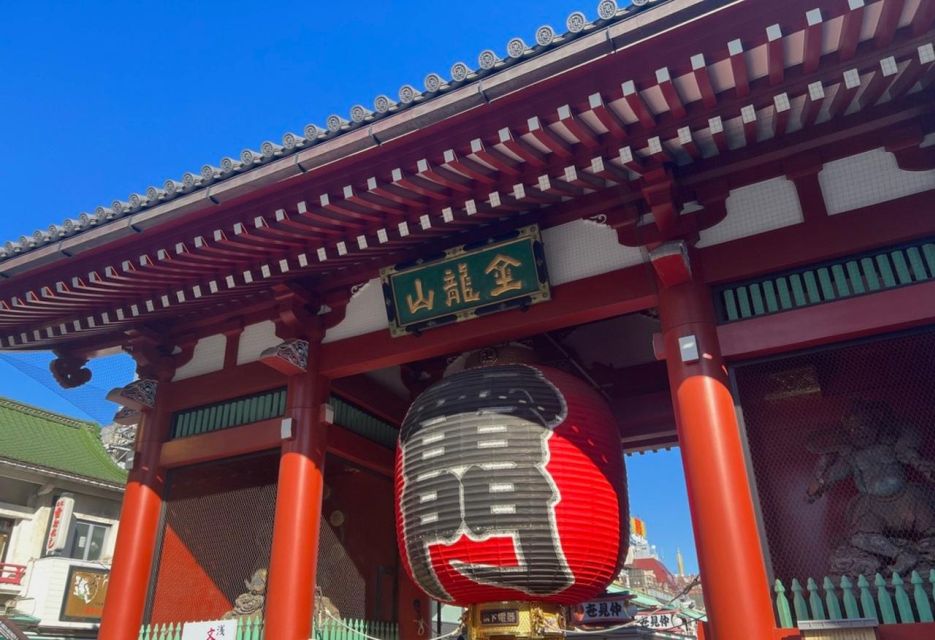
- 2-hour walking tour from Asakusa to Ueno, led by a live English guide, offering a small-group immersion in traditional Japanese downtown areas.
- Exploration of Kappabashi Street’s vast array of cooking utensils and kitchenware, with insights into their traditional uses and cultural significance.
- Visit to the ornate Higashi Honganji Temple, a prominent Jōdo Shinshū Buddhist institution, to learn about the rich cultural heritage.
- Opportunity to discover traditional Japanese paper products, known as ‘washi,’ and marvel at the craftsmanship and cultural significance.
- Culmination of the tour at Ueno Station with a taste of the iconic Japanese confection, taiyaki.
Overview of the Walking Tour
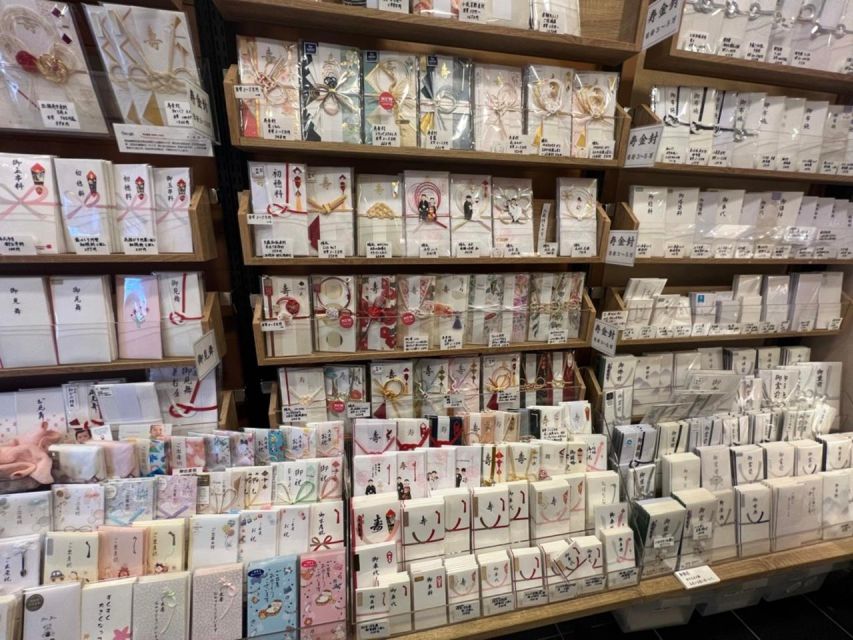
The 2-hour walking tour from Asakusa to Ueno offers participants a small-group experience led by a live English guide, allowing them to enjoy the traditional Japanese downtown areas and explore a variety of cultural objects and practices along the way.
With a maximum of 4 participants, the tour provides a personalized and intimate atmosphere as you venture through the charming streets, starting at the iconic Kaminarimon Gate in Asakusa.
Along the journey, you’ll visit Kappabashi Street to discover an array of cooking utensils and kitchenware, tour the Higashi Honganji Temple to learn about Buddhism, and stop at a store specializing in Japanese paper products.
The tour culminates at Ueno Station, where you’ll savor the delightful taste of taiyaki, a beloved Japanese baked sweet.
You can also read our reviews of more walking tours in Tokyo
Exploring Kappabashi Street
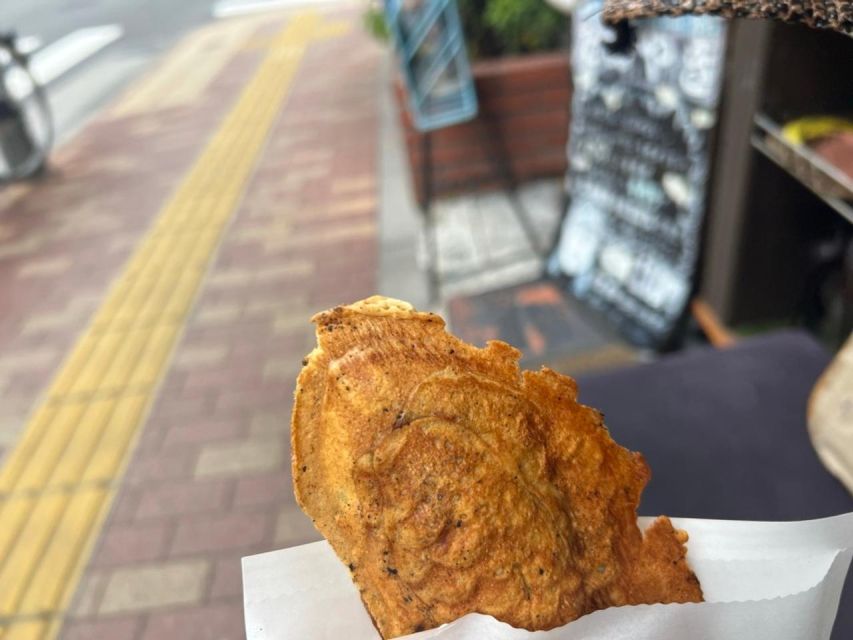
After exploring the spiritual side of Asakusa, the walking tour now takes participants to Kappabashi Street, a bustling area renowned for its vast array of cooking utensils, kitchenware, and culinary supplies.
As the group meanders down the lively street, they’re greeted by the sights and sounds of vendors hawking their wares – from gleaming copper pots and pans to intricate wooden chopsticks and ornate ceramic dishware.
The guide points out the unique features of various products, explaining their traditional uses and cultural significance.
Participants eagerly browse the endless rows of shops, marveling at the sheer variety on display and imagining the delectable dishes they could create with these specialized tools.
Visiting Higashi Honganji Temple
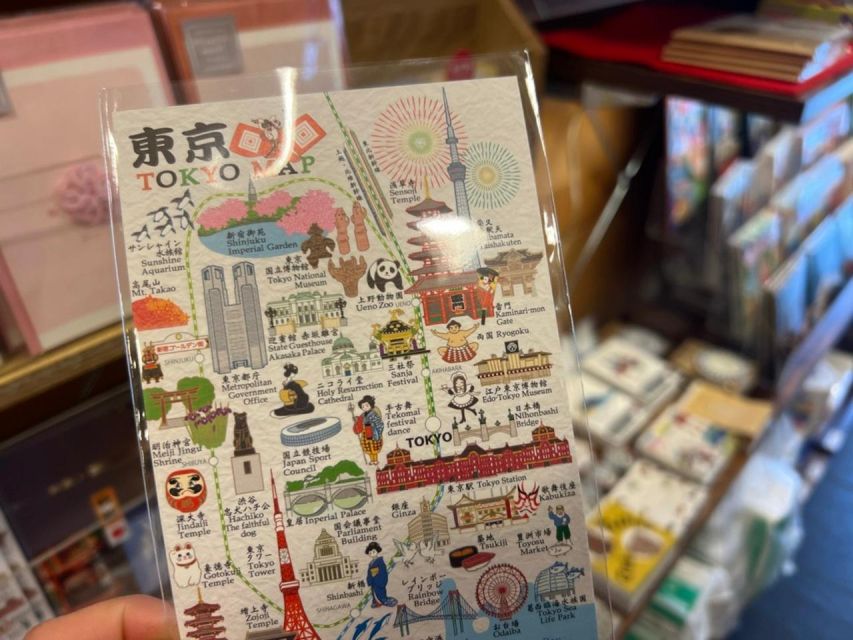
Next, the group frequently pauses in front of the grand Higashi Honganji Temple, its massive wooden structure dominating the streetscape.
The guide enthusiastically explains the temple’s significance as a prominent Jōdo Shinshū Buddhist institution, highlighting its ornate architectural features and storied history.
The group marvels at the intricate carvings and gilded details that adorn the temple’s imposing facade.
As they step inside, the guide describes the temple’s role as a center of worship and community, with devotees praying at the ornate altars and admiring the towering statues of revered Buddhist figures.
The tranquil atmosphere and the guides’ insightful commentary offer a glimpse into the rich cultural heritage of this sacred site.
Japanese Paper Products Store
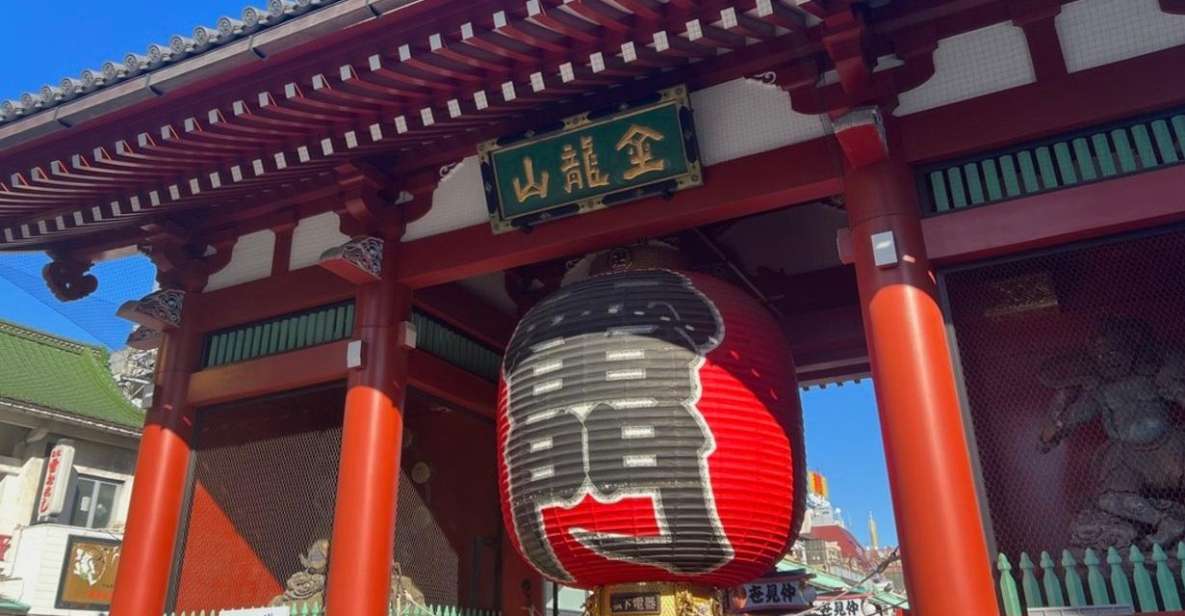
Leaving the serene temple grounds, the group follows the guide to a nearby store specializing in an array of traditional Japanese paper products, their eyes drawn to the vibrant colors and intricate patterns adorning the delicate sheets on display. The guide explains the cultural significance of these handcrafted papers, known as "washi," which have been used for centuries in a variety of applications, from calligraphy to origami. As the visitors browse the shelves, they discover a selection of notebooks, greeting cards, and decorative fans, each item a unique work of art. The guide encourages them to touch and feel the textures, marveling at the level of craftsmanship.
| Type | Uses | Materials |
|---|---|---|
| Calligraphy Paper | Painting, Brush Lettering | Kozo, Gampi, Mitsumata |
| Origami Paper | Folding | Lokta, Abaca, Cotton |
| Stationery | Cards, Envelopes, Journals | Mulberry, Hemp, Bamboo |
| Decorative | Gift Wrap, Lanterns, Fans | Gampi, Mitsumata, Kozo |
Discovering Shimotani Shrine
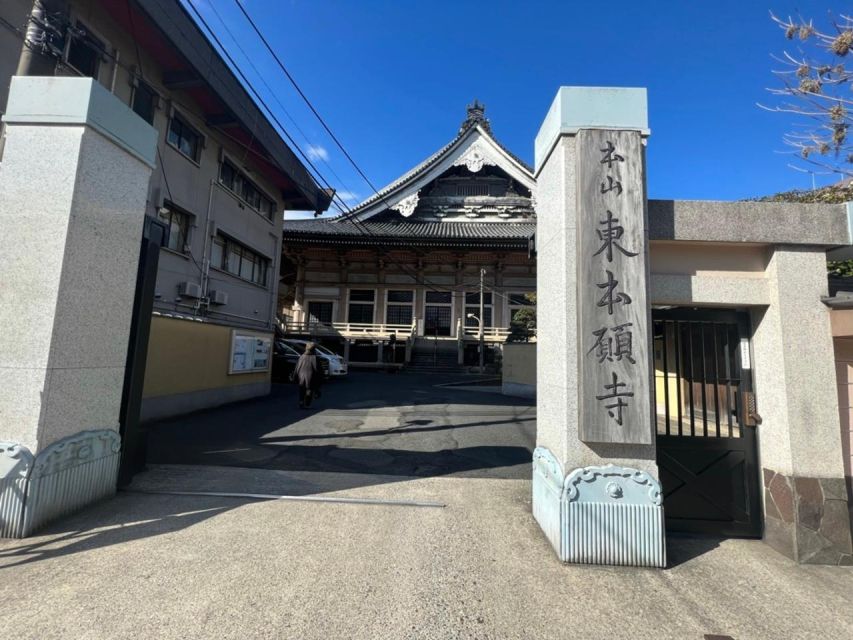
Stepping through the torii gate, the group is immediately enveloped by the serene ambiance of Shimotani Shrine, its tranquil grounds a welcome respite from the bustling streets.
The guide gestures towards the modest yet elegant structures, explaining the shrine’s significance as a place of worship dedicated to the Shinto deity Inari-sama, the patron of prosperity, business, and good harvests.
As the visitors wander through the shrine, they notice the vibrant crimson torii gates, the neatly raked gravel paths, and the stone lanterns that cast a warm glow.
The guide shares stories of the shrine’s history and invites the group to toss a coin into the offering box, a gesture to seek Inari-sama’s blessings.
You can also read our reviews of more tours and experiences in Tokyo
Enjoying Taiyaki at Ueno Station
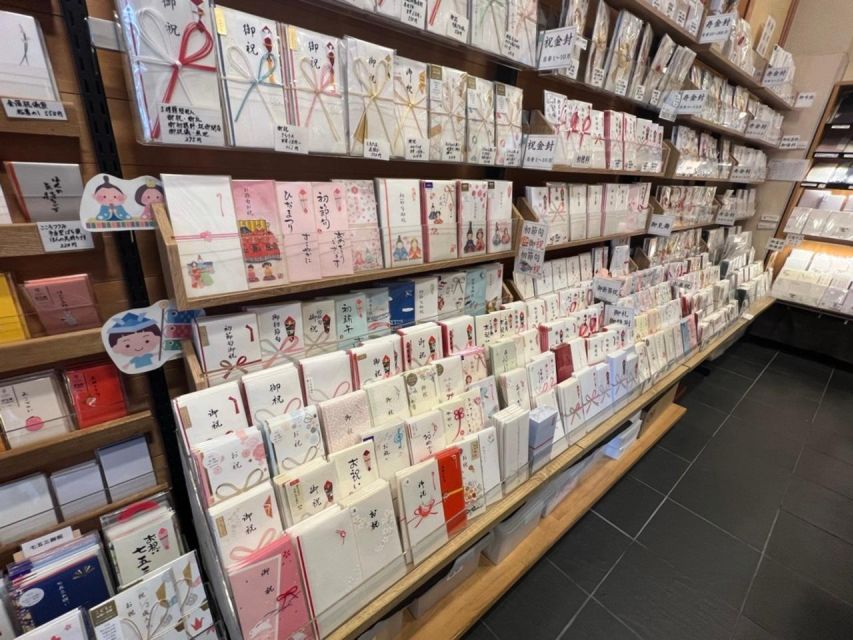
As the walking tour draws to a close, the group eagerly finds its way to Ueno Station, where the tantalizing aroma of freshly baked taiyaki beckons from a nearby storefront.
With a spring in their step, they approach the quaint little shop, its windows proudly displaying the golden-brown confections oozing with sweet red bean paste. The guide explains that taiyaki, a beloved Japanese snack, is crafted from a waffle-like batter poured into fish-shaped molds and filled with various sweet fillings.
The group watches in delight as the shopkeeper expertly flips and fills each taiyaki, releasing a cloud of steam. Without hesitation, they savor the warm, crispy treats, the sweet flavors bursting in their mouths and capping off a delightful cultural exploration.
The shop’s vibrant red-and-white striped awning and cheerful signage beckon passersby.
The sizzling sound of batter being poured onto the hot griddle fills the air.
The group takes turns choosing their preferred fillings, from classic red bean to more modern options like custard or chocolate.
Experiencing Traditional Japanese Areas
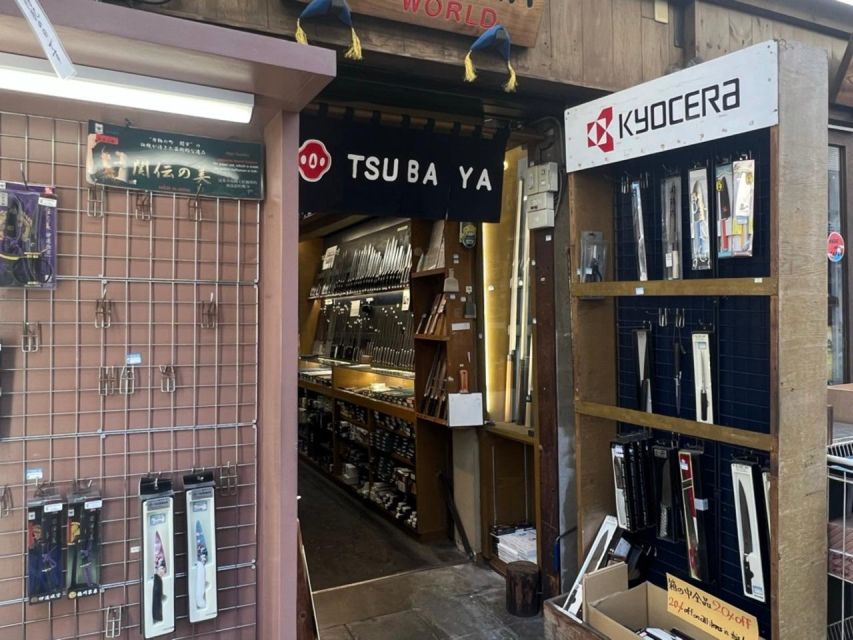
The group explores the traditional downtown districts, seeing the lively local atmosphere as they wander the narrow streets lined with quaint shops and eateries. Vibrant red lanterns and intricate architectural details capture their attention, painting a vivid picture of Japan’s cultural heritage.
| Traditional Sights | Unique Experiences | Cultural Insights |
|---|---|---|
| Kappabashi Street, known as "Kitchen Town", showcases a dazzling array of cooking utensils and kitchenware | Visiting Higashi Honganji Temple, a serene Buddhist sanctuary, allows the group to learn about the foundations of the religion | Shimotani Shrine, dedicated to the Shinto deity Inari-sama, offers a glimpse into Japan’s ancient spiritual beliefs and practices |
The group is fully immersed in the rich tapestry of traditional Japanese culture, gaining a deeper appreciation for the country’s enduring heritage.
Booking and Cancellation Information
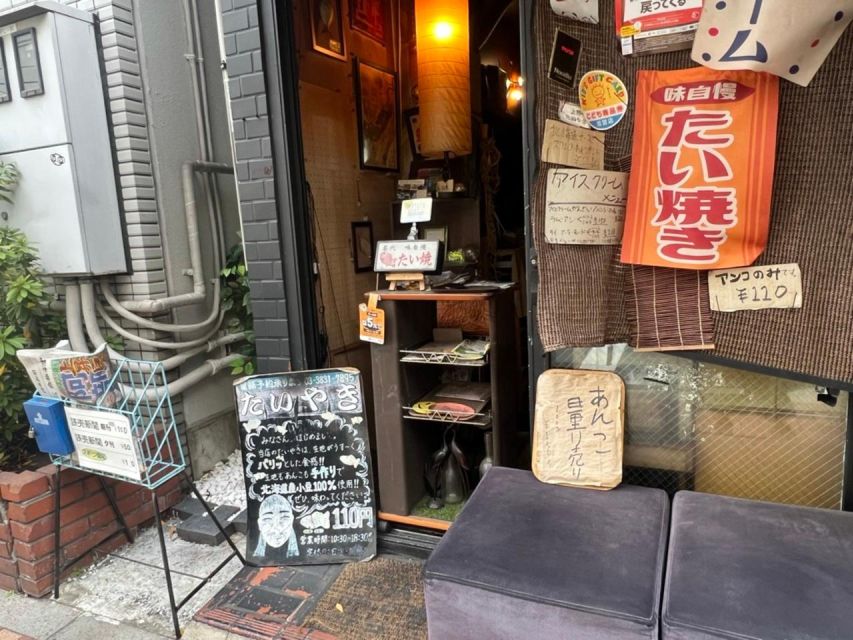
You can easily book this walking tour, with the option to pay later. The tour operator offers free cancellation up to 24 hours in advance, providing flexibility for your travel plans.
To reserve your spot, simply check the availability for your preferred starting time and make your booking. This thoughtful policy allows you to adjust your schedule if needed without penalty.
The tour is limited to small groups of up to 4 participants, ensuring a personalized experience led by a knowledgeable English-speaking guide. With these convenient booking options, you can confidently plan your Asakusa to Ueno walking adventure.
- Check availability for your desired start time when making your reservation.
- Take advantage of the pay-later option to secure your spot.
- Enjoy the free cancellation policy up to 24 hours before the tour.
Frequently Asked Questions
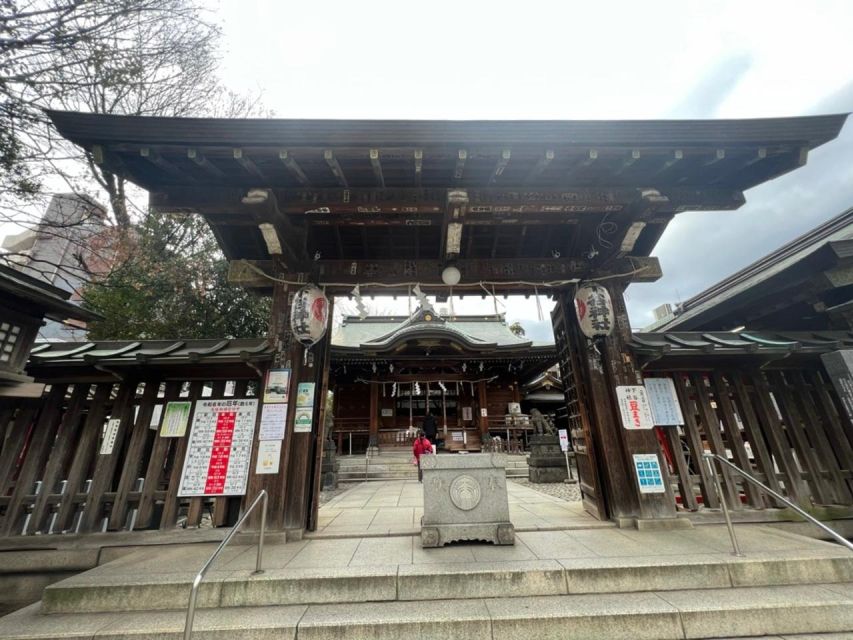
Is the Tour Wheelchair Accessible?
The tour is not wheelchair accessible. The walking route includes narrow streets, uneven terrain, and multiple stairs, which would pose significant challenges for wheelchair users. Visitors requiring accessibility accommodations may need to consider alternative sightseeing options.
Do We Need to Bring Our Own Snacks?
No, you don’t need to bring your own snacks. The tour includes a stop to try taiyaki, a popular Japanese baked treat, at the end of the tour near Ueno Station. The guide will provide this traditional Japanese snack.
Can We Take Photos During the Tour?
Yes, participants are encouraged to take photos throughout the tour. The guide will provide tips on capturing the best shots of Japanese architecture, cultural artifacts, and scenic views along the walking route.
Is There a Minimum Age Requirement?
There’s no minimum age requirement for the tour, but it’s recommended for children aged 10 and up who can walk the 2-hour route comfortably. The tour may not be suitable for very young children.
What Is the Policy for Late Arrivals?
The tour has a strict start time, so latecomers may not be able to join the group. Guests are encouraged to arrive 10-15 minutes early to ensure they don’t miss the tour’s departure. Late arrivals will be accommodated if possible, but can’t be guaranteed.
Recap
The walking tour through the traditional neighborhoods of Asakusa and Ueno offers an immersive cultural experience.
Visitors will explore the heart of Japanese heritage, from browsing Kappabashi Street‘s renowned cooking utensils to savoring the delightful taiyaki pastry.
Along the way, they’ll discover the ornate Higashi Honganji Temple, the beauty of Japanese paper products, and the serenity of Shimotani Shrine.
This two-hour journey provides an authentic glimpse into Japan’s rich cultural tapestry.
You can check availability for your dates here:More Walking Tours in Tokyo
- Tokyo Castle & Imperial Palace , Historical Walking Tour
- 3-Hour Odaiba Scenic Photo Walking Tour
- Tokyo Tsukiji Fish Market Walking and Exploring Hidden Gems Tour
- Small Group Shinjuku Gyoen Walking Tour
- Flavors Of The Past: Yanaka Walking Family Food Tour With Guide
- Tokyo: Historical Walking Tour of Skytree and Asakusa
More Tours in Tokyo
- Tokyo Traditional Food Tour in a Small Group
- Private 1 Day Tour to Nikko: Onsen, UNESCO Shrines and Nature
- Tokyo 6 Hr Private Guided Tour & Rickshaw Experience
- Private Breakfast Tour at Tsukiji Outer Market
- Japan Autumn & Winter Illuminations Discovery Tour (12 Days)
- Old and New Tokyo Full Day Private Tour
More Tour Reviews in Tokyo
- Tokyo Traditional Food Tour in a Small Group
- Private 1 Day Tour to Nikko: Onsen, UNESCO Shrines and Nature
- Tokyo 6 Hr Private Guided Tour & Rickshaw Experience
- Private Breakfast Tour at Tsukiji Outer Market
- Japan Autumn & Winter Illuminations Discovery Tour (12 Days)
- Old and New Tokyo Full Day Private Tour
Not for you? Here's more nearby things to do in Tokyo we have reviewed
- Tokyo Traditional Food Tour in a Small Group
- Private 1 Day Tour to Nikko: Onsen, UNESCO Shrines and Nature
- Tokyo 6 Hr Private Guided Tour & Rickshaw Experience
- Private Beginner Japanese Cooking Class Near Tokyo
- Private Breakfast Tour at Tsukiji Outer Market
- Japan Autumn & Winter Illuminations Discovery Tour (12 Days)
- Old and New Tokyo Full Day Private Tour
- 【Private】Sushi & Ramen Cooking & Sake Set in Tokyo!(+Recipe)
- Private 1 Day Tour to Kamakura: Sea, Temples, and Coastal Scenery
- Tokyo Castle & Imperial Palace , Historical Walking Tour
- One Way Shuttle Van Transfer, Tokyo⇔Hakone Area
- Barrier Free Transportation in Hakone, No Guide (Tokyo Dep.)
